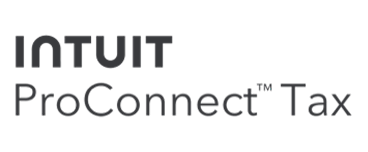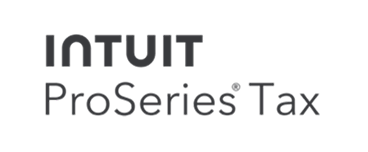
Data Security Plan: What is it and why do you need one?
Did you know that as a tax professional, you are required by law to have a data security plan in place? According to the FTC Safeguards Rule, tax return preparers must create and enact a data security plan to protect client data. Failure to do so could result in an FTC investigation and could be viewed as a violation of IRS Revenue Procedure 2007-40, which sets the rules for tax professionals participating as an Authorized IRS e-file Provider.
If you don’t have a data security plan in place, don’t panic! Doing so doesn’t have to be complicated and there are many resources available to assist you.
The following is information that the IRS sent to all tax preparers on July 23, 2019:
The FTC-required information security plan must be appropriate to the company’s size and complexity, the nature and scope of its activities and the sensitivity of the customer information it handles. According to the FTC, each company, as part of its plan, must:
– designate one or more employees to coordinate its information security program;
– identify and assess the risks to customer information in each relevant area of the company’s operation and evaluate the effectiveness of the current safeguards for controlling these risks;
– design and implement a safeguards program and regularly monitor and test it;
– select service providers that can maintain appropriate safeguards, make sure the contract requires them to maintain safeguards and oversee their handling of customer information; and
– evaluate and adjust the program in light of relevant circumstances, including changes in the firm’s business or operations, or the results of security testing and monitoring.
The FTC says the requirements are designed to be flexible so that companies can implement safeguards appropriate to their own circumstances. The Safeguards Rule requires companies to assess and address the risks to customer information in all areas of their operations.
Please note: The FTC currently is re-evaluating the Safeguards Rule and has proposed new regulations. Be alert to any changes in the Safeguards Rule and its effect on the tax preparation community. It is also a good idea to subscribe to IRS newsletters to stay up to date on the latest information available.
IRS Publication 4557, Safeguarding Taxpayer Data (PDF), details critical security measures that all tax professionals should enact. The publication also includes information on how to comply with the FTC Safeguards Rule, including a checklist of items for a prospective data security plan. Tax professionals are asked to focus on key areas such as employee management and training; information systems; and detecting and managing system failures.
Additional data protection provisions may apply
The IRS and certain Internal Revenue Code (IRC) sections also focus on protection of taxpayer information and requirements of tax professionals. Here are a few examples:
IRS Publication 3112 – IRS e-File Application and Participation, states: Safeguarding of IRS e-file from fraud and abuse is the shared responsibility of the IRS and Authorized IRS e-file Providers. Providers must be diligent in recognizing fraud and abuse, reporting it to the IRS, and preventing it when possible. Providers must also cooperate with the IRS’ investigations by making available to the IRS upon request information and documents related to returns with potential fraud or abuse.
IRC, Section 7216 – This IRS code provision imposes criminal penalties on any person engaged in the business of preparing or providing services in connection with the preparation of tax returns who knowingly or recklessly makes unauthorized disclosures or uses information furnished to them in connection with the preparation of an income tax return.
IRC, Section 6713 – This code provision imposes monetary penalties on the unauthorized disclosures or uses of taxpayer information by any person engaged in the business of preparing or providing services in connection with the preparation of tax returns.
IRS Revenue Procedure 2007-40 – This legal guidance requires authorized IRS e-file providers to have security systems in place to prevent unauthorized access to taxpayer accounts and personal information by third parties. It also specifies that violations of the GLB Act and the implementing rules and regulations put into effect by the FTC, as well as violations of non-disclosure rules addressed in IRC sections 6713 and 7216, are considered violations of Revenue Procedure 2007-40. These violations are subject to penalties or sanctions specified in the Revenue Procedure.
Many state laws govern or relate to the privacy and security of financial data, which includes taxpayer data. They extend rights and remedies to consumers by requiring individuals and businesses that offer financial services to safeguard nonpublic personal information. For more information on state laws that businesses must follow, consult state laws and regulations.
Where to report data theft for the IRS, states
To notify the IRS in case of data theft, contact the appropriate local IRS Stakeholder Liaison.
In some states, data thefts must be reported to various authorities. Email the Federation of Tax Administrators at StateAlert@taxadmin.org to get information on how to report victim information to the states.
Additional resources
Tax professionals also can get help with security recommendations by reviewing the recently revised IRS Publication 4557, Safeguarding Taxpayer Data (PDF), and Small Business Information Security: the Fundamentals (PDF) by the National Institute of Standards and Technology.
Publication 5293, Data Security Resource Guide for Tax Professionals (PDF), provides a compilation of data theft information available on IRS.gov. Also, tax professionals should stay connected to the IRS through subscriptions to e-News for Tax Professionals and social media.
The Taxes-Security-Together Checklist
During this special Security Summit series, the checklist highlights these key areas for tax professionals:
– Deploy “Security Six” basic safeguards
– Create data security plan
– Educate yourself on phishing scams
– Recognize the signs of client data theft
– Create a data theft recovery plan, and call the IRS immediately






